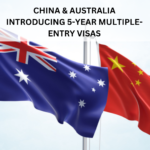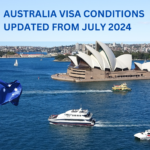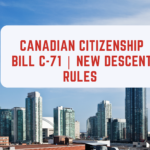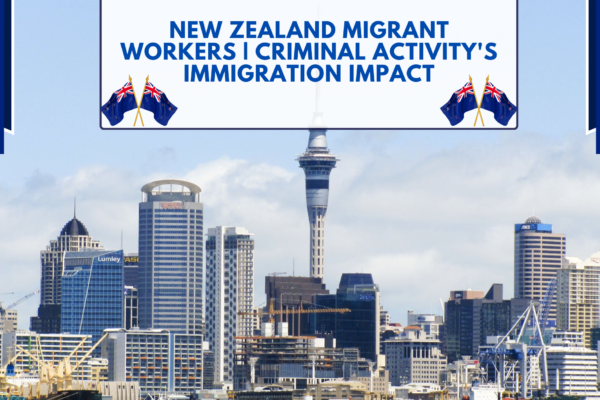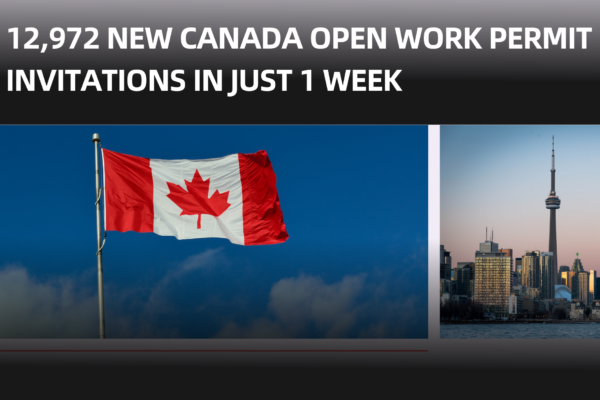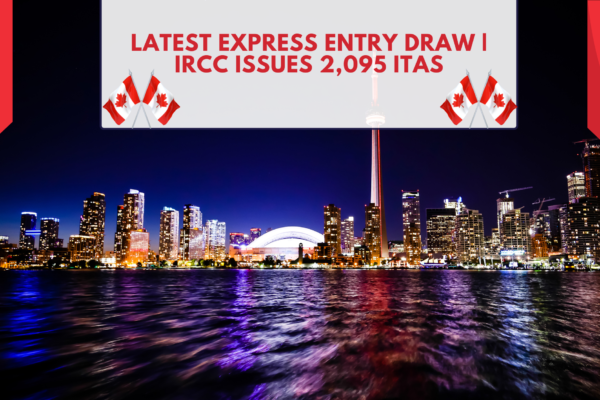
Latest Express Entry Draw | 2,095 ITAs by IRCC
Latest Express Entry Draw | IRCC Issues 2,095 ITAs : Regarding immigration to Canada, the Express Entry system is a crucial pathway for qualified applicants seeking permanent residence. Immigration, Refugees and Citizenship Canada (IRCC) organizes these events, and each one raises expectations and questions for both candidates and immigration experts. The most recent Lastest Express Entry draw, which took place on April 23, 2024, resulted in 2,095 Invitations to Apply (ITAs), indicating a significant turning point in Canada’s immigration landscape. This essay aims to provide a thorough explanation of the draw by exploring several aspects including draw classifications, minimum Comprehensive Ranking System (CRS) scores, and the implications for prospective candidates. Understanding the Latest Express Entry Draw: This selection on April 23rd is the third of the month after the draws held on April 10th and April 11th. Every version is a declaration of the IRCC’s commitment to facilitate the entry of qualified people who can contribute to the development of Canada’s economy. In order to be eligible for an Invitation to Apply (ITA) in the most recent draw, candidates had to achieve a minimum CRS score of 529, indicating how difficult the selection process was. The process is competitive, which emphasizes how important it is to have a strong CRS score in order to improve your chances of winning the Lastest Express Entry draw. April 10 Draw: General Approach: Candidates from all Express Entry programs were included in the most latest Express Entry draw, which took place on April 10th. Surprisingly, 1,280 individuals were invited to this draw, setting a higher bar with a minimum CRS score of 549. The minimal CRS score has increased significantly from previous draws, which demonstrates the flexibility of Express Entry selection criteria and the changing needs of the Canadian labor market. This increase in the CRS standard highlights how competitive the Latest Express Entry draw selection process is, and it also highlights how candidates must always improve their profiles to stay competitive in the changing immigration market. April 11 Draw: In the most latest Express Entry draw, which took place on April 11, candidates who fit the criteria for STEM occupations subject to category-based selection were given special attention. A total of 4,500 individuals who met the minimum CRS score criteria of 491 were invited through this customized draw. The increased focus on STEM careers demonstrates Canada’s recognition of the critical role that innovation and technology play in promoting economic growth and boosting competitiveness globally.The primary objective of the April 11 Express Entry draw was on applicants with experience in STEM subjects. 4,500 people who met the 491 minimum CRS score requirement were chosen as a consequence of this focused approach. Canada has demonstrated its commitment to using innovation and technology breakthroughs as engines for long-term economic growth and international recognition by placing a purposeful emphasis on STEM careers. Category-Based Selection: The Latest Express Entry draw showcases IRCC’s strategic focus on targeting candidates possessing sought-after attributes like language proficiency or occupation. The categories for 2023, reaffirmed for 2024, encompass Healthcare occupations, STEM professions, Trades occupations, Transport occupations, Agriculture and agri-food occupations, and Strong French proficiency. In order to be eligible for occupation-based categories, candidates must show that they have worked full-time in a qualified occupation for at least six months out of the previous three years. This strategic approach ensures that the selection process aligns closely with the evolving needs of Canada’s labor market. Express Entry Overview: The Federal Skilled Worker Program (FSWP), the Canadian Experience Class (CEC), and the Federal Skilled Trades Program (FSTP) are just a few of the economic immigration programs that prospective immigrants can access through the Latest Express Entry Draw. Through the IRCC website, candidates submit their profiles. From there, they are evaluated on important human capital variables including age, occupation, job experience, education, and language ability. All of these elements add up to the Comprehensive Ranking System (CRS) score, which is a crucial aspect in the selection process. The Latest Express Entry Draw is an important step for people who want to live permanently in Canada, since a higher CRS score increases the likelihood of getting an Invitation to Apply (ITA). Summary of 2024 Express Entry Draw Results: The following table provides a comprehensive summary of the results of the latest Express Entry draws in 2024, highlighting important factors such as draw classification, the number of Invitations to Apply (ITAs), and the minimum Comprehensive Ranking System (CRS) scores needed to be taken into account: Date Draw Type Number of Invitations Lowest CRS April 23 General 2,095 529 April 11 STEM occupations 4,500 491 April 10 General 1,280 549 March 26 French language proficiency 1,500 388 March 25 General 1,980 524 March 13 Transport occupations 975 430 March 12 General 2,850 525 February 29 French language proficiency 2,500 336 February 28 General 1,470 534 February 16 Agriculture & Food Industry Roles 150 437 February 14 Healthcare occupations 3,500 422 February 13 General 1,490 535 February 1 French language proficiency 7,000 365 January 31 General 730 541 January 23 General 1,040 543 January 10 General 1,510 546 Conclusion: The latest Express Entry draw illustrates how Canadian immigration laws are constantly changing and how the IRCC has strategically adjusted its operations to accommodate shifting economic needs. Understanding the nuances of CRS scoring and draw classifications is essential for successfully navigating the Express Entry process, especially for candidates who are looking forward to future drawings. With its open and merit-based selection procedure, the Latest Express Entry lottery continues to be the principal route for qualified people looking to settle in Canada. Get the latest visa and immigration updates by clicking here for more information.



